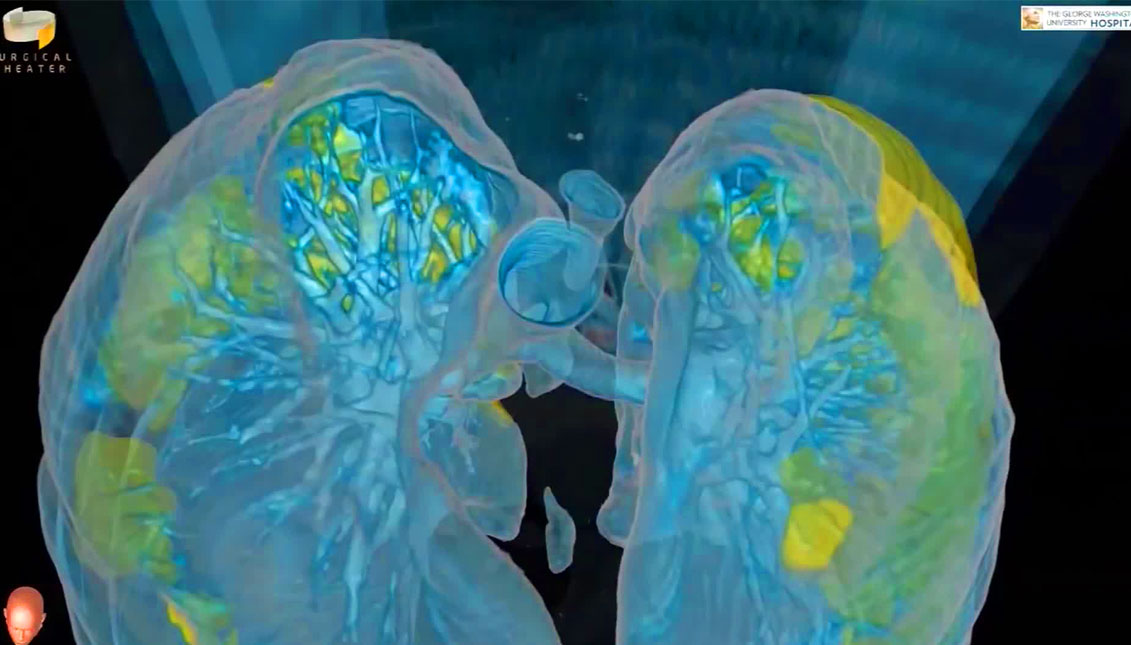
This is how your lungs look when they get infected with Coronavirus
New virtual reality technologies are not only useful for video games but also for help in times of coronavirus.
Symptoms from COVID-19 usually begin with a mild fever and flu-like symptoms, followed by a rapid decline in breathing capacity. This step between fever and the respiratory condition has not been easy to spot, because doctors don't know how the lungs are actually affected by the virus.
The George Washington University Hospital (GWU) published an image of COVID-19-infected lungs created through virtual reality (VR) in the hopes that such images will impact citizens and help them understand the importance of keeping themselves and others safe.
The image comes from a VR video developed by GWU's chief of thoracic surgery, Dr. Keith Mortman, and the Surgical Theater, developers of VR imaging software that uses real-world data to create 3D medical visualizations. Mortman previously used the software to show patients’ lung or esophageal tumors before surgery but saw an opportunity to reveal the unusual way COVID-19 operates after taking a CT scan of an infected patient.
RELATED CONTENT
The lungs are opaque under normal conditions, but in VR are represented in translucent blue, with infected areas in yellow. Beyond the impact of the virus spreading through the lungs, the visualization created by the GWU shows how the body reacts to COVID-19 by creating multiple zones of inflammation, effectively suffocating normal lung capacity enough that patients need to be intubated to a ventilator or respirator. "The damage we're seeing is not isolated to any part of the lung. It's severe damage to both lungs in a diffuse way," the specialist doctor told CNET.
A worrying finding is that survivors of COVID-19 can end up with significant and lasting lung damage if the inflammation does not subside over time. At that point, it becomes a scar on the lungs and could affect a patient's ability to breathe in the long term.
Mortman hopes that by seeing the severity of the infection through the 3D visualizations, the most stubborn members of the public will find cause to stay home, wash their hands and take other precautions to keep themselves and their communities safe. The full video is here.











LEAVE A COMMENT:
Join the discussion! Leave a comment.